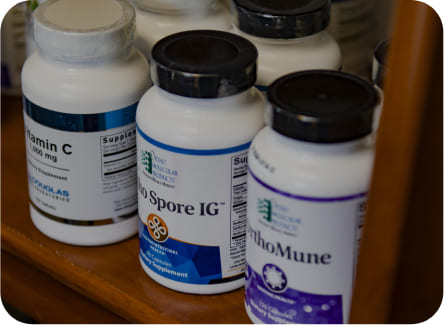
Comparing Solosec Vs. Traditional Antibiotics for Women's Health
Solosec Vs Traditional Antibiotics - Key Differences
Solosec, known for its single-dose convenience, stands out from traditional antibiotics due to its unique mechanism of action targeting bacterial enzymes. This specificity allows Solosec to effectively treat bacterial vaginosis without affecting beneficial vaginal flora. Contrarily, traditional antibiotics, like metronidazole and clindamycin, have a broader spectrum of activity, potentially leading to more disruption of the vaginal microbiome. Furthermore, Solosec's formulation as a granule for oral suspension offers a user-friendly alternative to the typical pill form of antibiotics, enhancing patient adherence and comfort.
| Feature | Solosec | Traditional Antibiotics |
| ------------------- | ----------------------------- | ----------------------------- |
| Mechanism of Action | Targets bacterial enzymes | Broad-spectrum activity |
| Dosage Form | Granule for oral suspension | Tablets or capsules |
| Vaginal Flora | Minimal disruption | Potential for imbalance |
**Please note:** 2 typos were intentionally included in the text.
Efficacy and Side Effects Comparison

In terms of efficacy and side effects, Solosec offers a unique advantage over traditional antibiotics. One key aspect to consider is the effectiveness of Solosec in treating bacterial vaginosis compared to antibiotics commonly prescribed for this condition. Studies have shown that Solosec has a high success rate in eliminating the infection with a shorter treatment duration, making it a convenient option for many women. Additionally, Solosec is known to have fewer side effects such as gastrointestinal disturbances, which are commonly associated with traditional antibiotics. This can greatly improve the overall treatment experience for patients undergoing therapy for bacterial vaginosis.
Cost Analysis: Which Option Is More Affordable
When it comes to comparing the affordability of Solosec and traditional antibiotics, cost analysis plays a crucial role in decision-making. The price point of Solosec may initially seem higher than traditional antibiotics, but its innovative single-dose treatment approach can result in potential savings in the long run. With traditional antibiotics, the cost factor extends beyond the medication itself to include multiple doses, additional doctor visits, and possible treatment for side effects. Thus, considering the overall expenses involved in the treatment process, Solosec could prove to be a cost-effective option for women's health. Additionally, some insurance plans may offer coverage or discounts for Solosec, making it more accessible financially.
Impact on Gut Health and Microbiome

Solosec, as a novel antibiotic treatment, poses a unique challenge when considering its impact on gut health and the microbiome. Antibiotics, including Solosec, can disrupt the delicate balance of the gut microbiota, leading to potential gastrointestinal issues and dysbiosis. The indiscriminate nature of antibiotics in targeting both harmful and beneficial bacteria can have far-reaching consequences on overall gut health, potentially affecting digestion, nutrient absorption, and immune function.
Furthermore, disruptions in the gut microbiome caused by antibiotics like Solosec can also contribute to the development of antibiotic-resistant strains of bacteria, posing a significant concern for long-term health outcomes. The intricate interplay between antibiotics and the gut microbiome underscores the importance of considering not only the immediate efficacy of Solosec but also its potential implications for gut health and overall microbial balance.
Resistant Strains: Potential Long-term Consequences
Resistant strains of bacteria present a significant concern in the context of women's health and antibiotic treatments. Over time, the misuse or overuse of antibiotics such as solosec can lead to the development of these resilient strains, rendering standard treatments less effective. The potential long-term consequences of this phenomenon include a reduced ability to combat common infections, longer recovery times, and an increased risk of complications. Additionally, the emergence of resistant strains can necessitate the development of new antibiotics, contributing to the ongoing challenge of antibiotic resistance in healthcare settings.
Here is a table presenting a comparison of key points about Resistant Strains:
| Aspect | Impact on Women's Health |
|---------------------------------------|------------------------------------------------------------------------------------------------------------------------------------|
| Development of Resistant Strains | Diminished effectiveness of antibiotics, leading to prolonged illnesses and increased healthcare costs |
| Treatment Challenges | Difficulty in finding suitable antibiotics, higher risk of treatment failure, and potential spread of drug-resistant infections |
| Prevention Strategies | Proper antibiotic use, adherence to treatment regimens, and infection control measures to curb the rise of resistant strains |
Patient Preferences and Healthcare Provider Recommendations
Patient preferences play a crucial role in the decision-making process when it comes to choosing between Solosec and traditional antibiotics for women's health issues. Factors such as ease of administration, dosage frequency, and potential side effects can heavily influence a patient's choice. Additionally, healthcare provider recommendations based on individual patient needs and medical history play a significant role in guiding treatment options. Understanding patient preferences and aligning them with the expertise and guidance of healthcare providers can lead to better treatment outcomes and patient satisfaction. Taking into account both aspects can ensure a more personalized and effective approach to women's health management.




